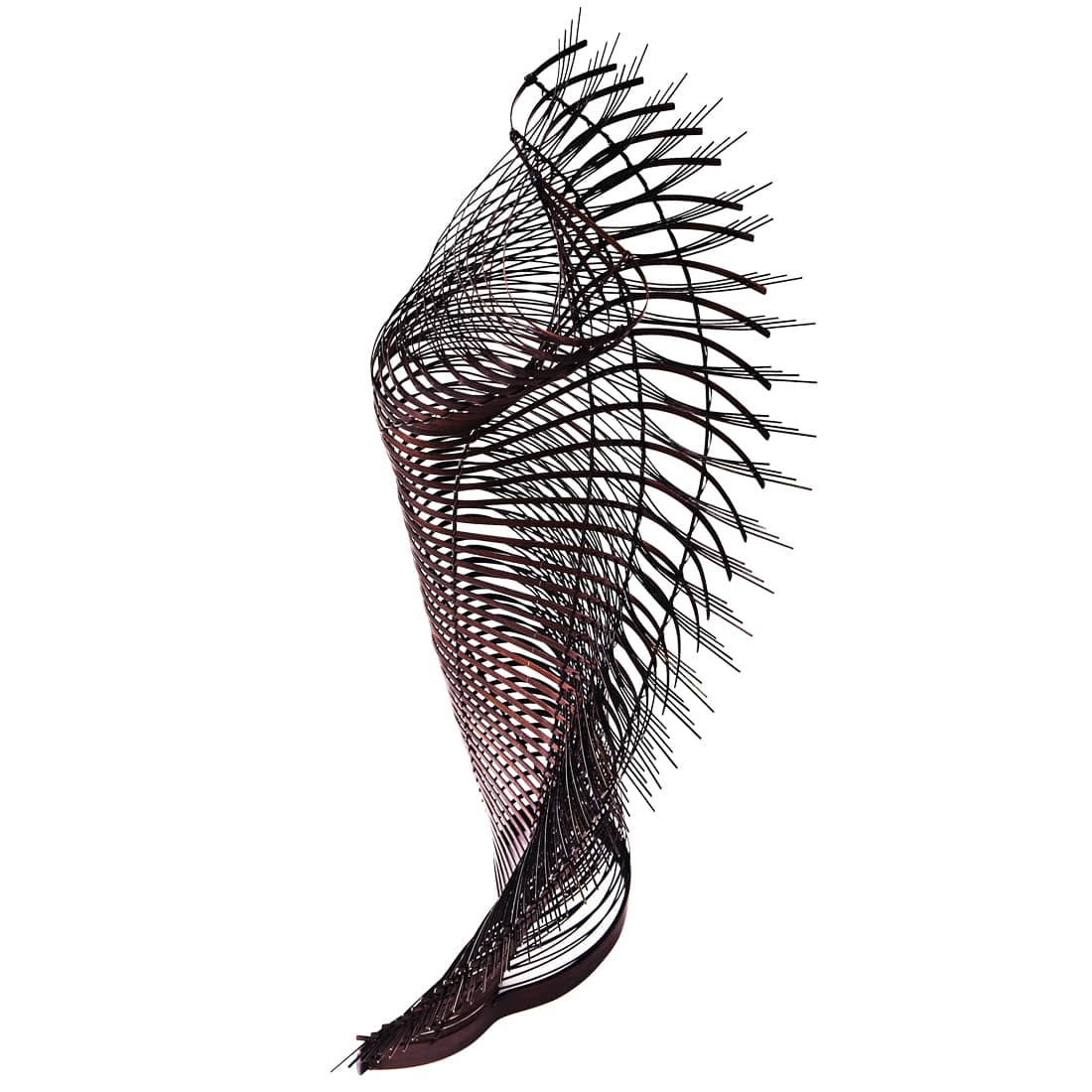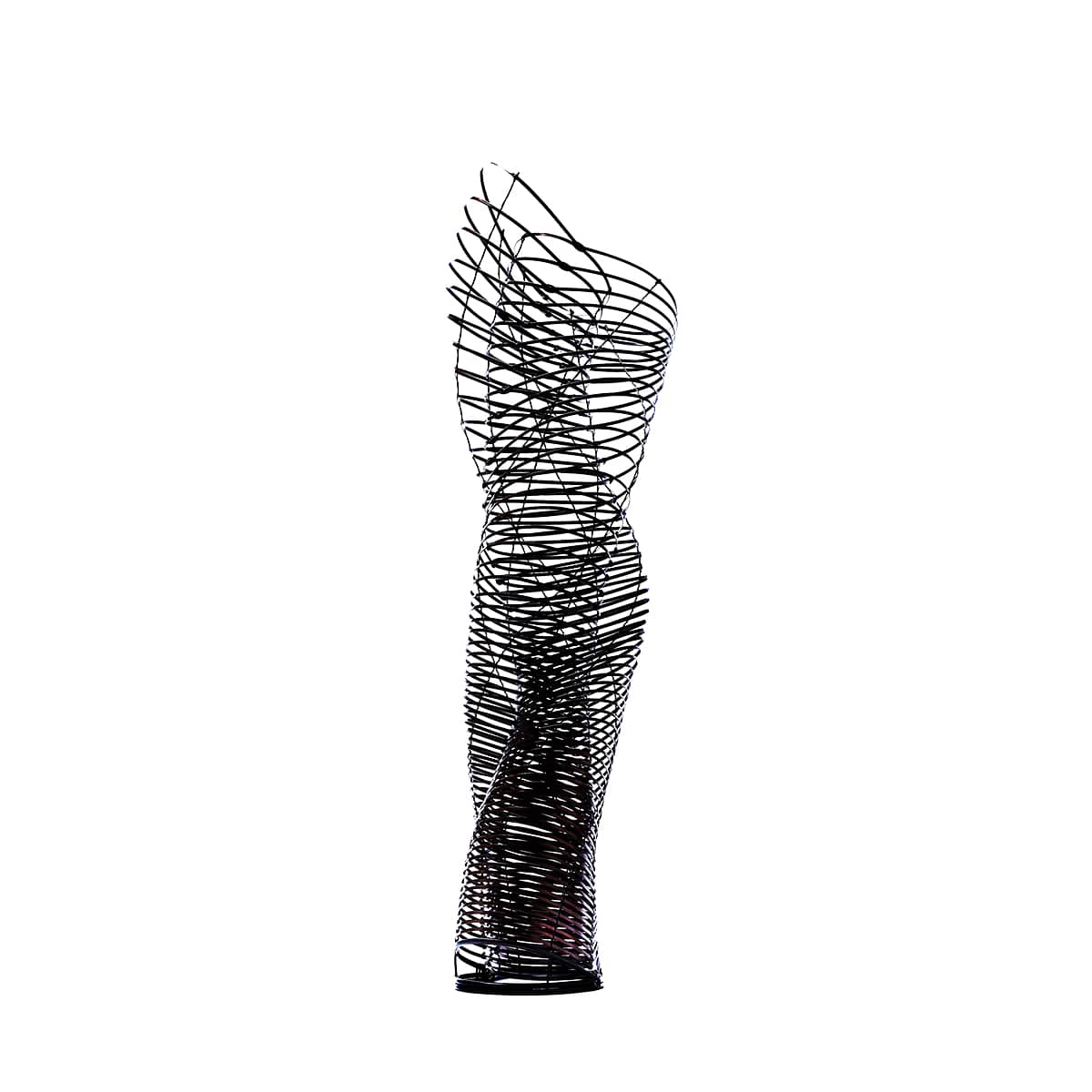Disappear IX
Tanabe Chikuunsai IV / Chikuunsai IV
- Sold
-
Material
Bamboo madake & rattan
-
Period
2021
-
Box
Tomobako
Description
Disappear IX - Geometric design by Sawako Kaijima
Galerie Mingei represents Tanabe Chikuunsai IV in France.
The works in the Disappear series, as well as the work Hanamushin, are the fruits of a collaboration between Sawako Kajima and Tanabe Chikuunsai IV. Sawako Kaijima is an Assistant Professor at Harvard University's Graduate School of Design and an Adjunct Professor at the Radcliffe Institute. She has also taught at the Singapore University of Technology and Design. Her research is focused on computer science applications in architecture and engineering.
The geometric complexity of these works is the result of a stable structure that was made possible by numerous small resin molds produced by a 3D printer. Tanabe Chikuunsai IV subsequently intervened to construct the final form by inserting strips of bamboo between the molds and the latter are removed once the work is finished. The bamboo thus breathes "life" into a digital image, and acquires the aspect of a special and remarkable material that is simultaneously out of time yet pregnant with a future. Disappear and Hanamushin are expressions of an artistic sensibility rooted neither in architectural models nor traditional works, but are atypical creations that manifestly have a place in a pertinent movement in contemporary art today.
Tanabe Chikuunsai IV (born Takeo in 1973) is the son of Chikuunsai III, who passed away in 2014. His first artist's name (gō) was Shouchiku, which means "little bamboo". Since April of 2017, he has carried the title Chikuunsai - that of his father, grandfather and great-grandfather - which means "bamboo cloud", and he represents the fourth generation of this dynasty of weavers.
Tanabe's family is based in Sakai (Osaka Prefecture). His mother, Mitsuko Tanabe (born in 1944) and his uncle, Yota Tanabe, are also weavers. The Tanabe family is very well known in Japan and enjoys an immense privilege: they exhibit every year in the Takashimaya department stores, and have done so without interruption since 1915.
This young artist was initiated into the arts of wickerwork weaving at a very early age, learning first from his father, and then studying fine arts at the Osaka City Crafts High School (1991). He has a degree in sculpture from Tokyo Art University (1999), and is also a graduate of the Bamboo Arts Craft Center of Oita Prefecture (2001). His international activities distinguish him from other bamboo artists. He has been an ambassador for Japanese wickerwork and has shown and given demonstrations all over the world, including in Australia, Korea, the Netherlands, New Zealand, the United States, Switzerland, France, Belgium, Russia, Finland, and Brazil.
Chikuunsai IV creates two kinds of bamboo works. The first, which are made using traditional techniques transmitted from generation to generation, are functional objects destined for used in ikebana and in the tea ceremony. He remains faithful to those traditions, and is currently passing his art on to future generations by teaching eight disciples and his three children. His ten-year-old daughter is already giving her first demonstrations.
His other works fall squarely into the realm of contemporary creation. Tanabe Chikuunsai IV is an artist of his time who expresses his individuality through various organic sculptural forms using Tiger bamboo and Black bamboo along with other natural materials. Both his functional and contemporary works are part of many notable international private and public collections. He has been awarded many prizes in Japan as well as abroad, and was the recipient of the prestigious Lloyd Cotsen Bamboo Prize in the United States in 2007.
Since 2015, he has produced a number of monumental installations: at the MET in New York, the Japan House in Sao Paulo, Takashimaya in Tokyo, the MNAA-Guimet in Paris, the Château de la Celle-Saint-Cloud, and the Domaine de Chaumont-sur-Loire (through November 2018), among other places.
A catalog with photographs by Japanese artist Tadayuki Minamoto will accompany the exhibition.
Prizes & Awards
1999 Newcomer Prize, Newcomer Exhibition in Sakai City (Sakai-shi bijutsu shinjin ten)
2000 Labor Ministry Prize, All Japan Technical Exhibition (Zenkoku sogo gino ten)
2001 Oita Governor Prize, Bamboo Craft Exhibition (Kurashino naka no chikukogei ten)
2001 Mayor’s Prize, Sakai City Art Exhibition (Sakai-shi ten)
2002 Yomiuri TV Prize, All Kansai Art Exhibition (Zen Kansai bijutsu ten)
2004 Osaka Craft Exhibition Choice Award, All Kansai Art Exhibition (Zen Kansai bijutsu ten)
2004 Sakai Art Association Prize, Sakai City Art Exhibition (Sakai-shi ten)
2007 Cotsen Prize
2010 Bavarian State Prize, Working Area Braiding (Bayerischer Staatspreis, Werkbereich Flechten)
2011 Asahi Newspaper Prize, 13th Exhibition of Traditional Wood and Bamboo Art Crafts (Dentō kōgei mokuchiku ten)
2012 Newcomer’s Prize, 59th Exhibition of Japanese Traditionnal Art Crafts (Nihon dento kōgei ten)
Public Collections
Musée national des Art Asiatiques – Guimet, Paris, France
Musée du quai Branly – Jacques Chirac, Paris, France
Metropolitan Museum of Art, New-York, USA
British Museum, London, UK
Victoria and Albert Museum, London, UK
Morikami Museum, Florida, USA
Minneapolis Institute of Arts, Minneapolis, USA
Museum of Fine Arts, Boston, USA
The Ruth and Sherman Lee Institute for Japanese Art, USA
Clark Center for Japanese Art and Culture, Hanford, California, USA
San Francisco Asian Art Museum, USA
Long Beach Museum of Art, USA
Seattle Art Museum, USA
Philadelphia Museum of Art, USA
Japan Imperial Household Agency, Tokyo, Japan
Osaka City Crafts High School, Japan
Museum of Modern Art, Tokyo, Japan
Museo Nacional de Arte, La Paz, Bolivia
Peruano-Japonés Centro Cultural, Lima, Peru


